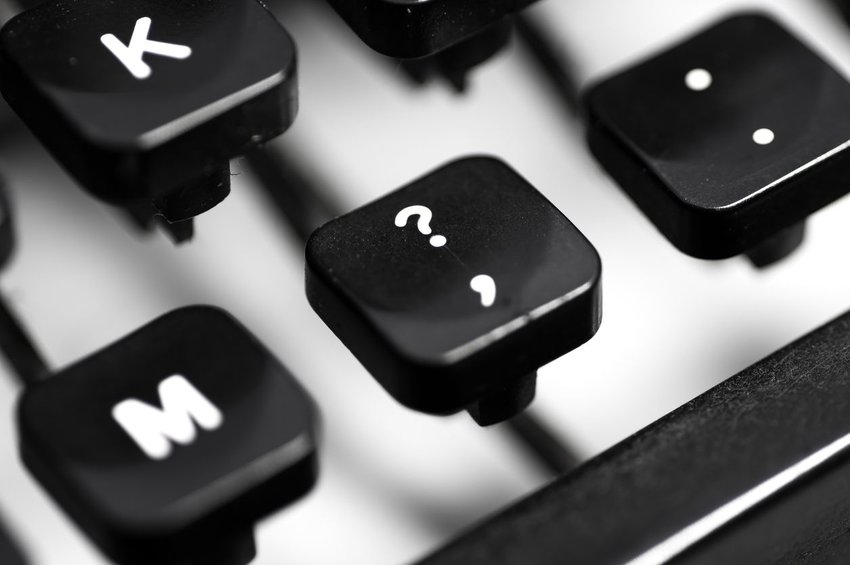Commas are one of the most commonly used punctuation tools, but also one of the most misused in the writer's toolbox. You may come across prose littered with stray commas, or you may encounter writers who simply omit the punctuation, creating wildly confusing sentences with no breaks in sight.
You may have been taught to use a comma when the reader would naturally pause, or need to take a breath, but that's just a guideline. Of course, grammar gets more specific. There are, in fact, explicit grammar rules to govern the application of commas. But those rules can vary from style guide to style guide, creating a more confusing mess for even skilled writers. So we're here to clear up some of the most useful rules in an attempt to end the plight of the comma.
Comma Rule Number 1: Lists
Let’s start with an easy one. Commas are used when writing lists of three or more items.
Example 1: I’m going to the store to buy flour, sugar, eggs, and jellybeans so I can make a jellybean cake.
Sound simple? It's a bit more complicated than that. That last comma in the series (the one after "eggs") is called the Oxford, or serial, comma, and it's optional, depending on whom you ask.
Some style guides, in particular the Chicago Manual of Style, include this comma. But you'll find others, like AP Style, that eschew this rule and leave out that final comma.
I’m going to the store to buy flour, sugar, eggs and jellybeans so I can make a jellybean cake.
If you're running an independent platform, you can decide for yourself if you want to include the serial comma. However, if you're publishing in a professional setting, do a little research on which style guide your outlet follows.
Comma Rule Number 2: Linking Independent Clauses
Independent clauses are fully formed ideas that could stand alone as sentences. When they are joined together with a conjunction (and, or, but, etc.), they need a comma.
Example 2 (the two independent clauses are bolded): I baked a jellybean cake, and it tasted delicious.
In this case, the two independent clauses could each be its own sentence. But because they are combined, and linked by the word "and," they need a comma to separate them.
Comma Rule Number 3: Dependent Clauses
Dependent clauses feature a subject and a verb, but they aren’t complete sentences on their own. They tend to add a little contextual spice to an otherwise bland statement. If your sentence attaches a dependent clause to its independent counterpart, the two are joined with a comma.
Example 3 (the dependent clause is bolded): When I have a bad day, I comfort myself with a slice of jellybean cake.
Comma Rule Number 4: Non-Essential Descriptions
Captivating writing often includes details to bring a sentence to life. If you can remove the phrase without changing the meaning, it's considered non-essential. These descriptive words or phrases need to be shielded with commas.
Example 4 (the non-essential phrase is bolded): The jellybean cake, which tasted sweet, was the perfect dessert.
Comma Rule Number 5: Quotations
When someone is speaking or being quoted, a comma needs to precede or follow the speech. Depending on the order of the sentence, the comma can be inside or outside of the quotation marks.
Example 5: “This jellybean cake is sublime,” gushed the Michelin-starred chef.
The waitress agreed, "It was truly delicious."
Comma Rule Number 6: Introductory Elements
Introducing a sentence with an adverb (unfortunately, interestingly), or joining words and phrases (on the other hand, furthermore), requires a comma.
Example 6: Unsurprisingly, jellybean cake is about to take the world by storm.
Comma Rule Number 7: Addresses
Streets, cities, states, and countries need to be separated with commas when writing addresses.
Example 7: The Jellybean Cake Corporation international headquarters is located at 123 Cake Street, Candyland, Florida, USA.
Comma Rule Number 8: Dates
Like with addresses, the day, month, and year in a date need to be punctuated with commas.
Example 8: The concept of the jellybean cake was conceived on Thursday, June 6, 1574, by Spanish explorers.

